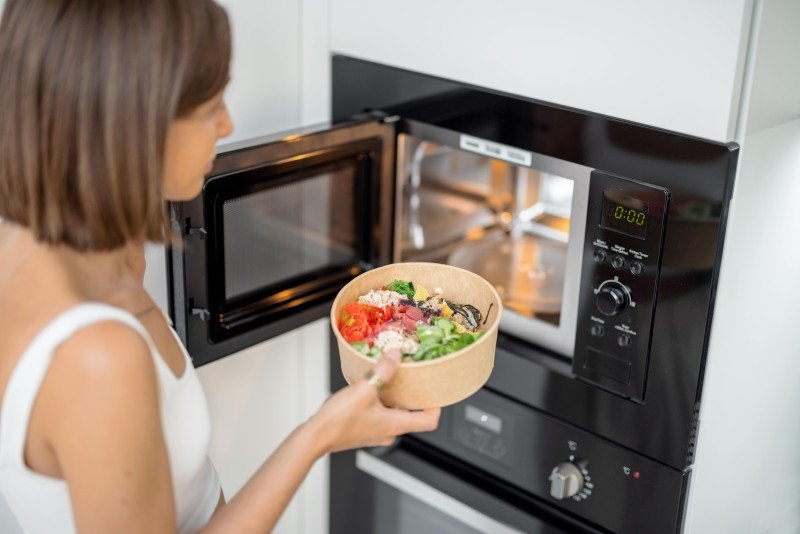15 Reasons Not To Ignore Electric Oven & Hob
Understanding Electric Ovens and Hobs: Your Guide to Cooking Efficiency
Electric ovens and hobs have actually changed the cooking landscape, offering home cooks and expert chefs a reliable, effective, and constant way to prepare meals. As technological developments continue to affect appliance design, the efficiency and performance of electric cooking systems have actually substantially improved. This short article looks into the functions, benefits, and considerations surrounding electric ovens and hobs, offering a comprehensive overview for anybody wanting to update or buy kitchen appliances.
What Are Electric Ovens and Hobs?
Electric ovens are kitchen home appliances created for baking, broiling, roasting, and other cooking methods that need regulated heat. They use electric coils or glowing heat elements to produce and maintain the wanted temperature level. Electric hobs, typically described as electric cooktops, are flat surfaces with heating aspects that permit pots and pans to be positioned straight on them for cooking.
Table 1: Key Differences Between Electric Ovens and Hobs
Feature
Electric Oven
Electric Hob
Main Function
Baking, roasting, broiling
Heating pots and pans for cooking
Heating Method
Electric coils or radiant components
Induction, glowing, or ceramic components
Operation Temperature Range
Up to 500 ° F (260 ° C
) Varies by style; generally lower than ovens
Cooking Styles
Versatile; suitable for numerous dishes
Primarily stovetop cooking approaches
Space Requirement
Usually built into kitchen cabinetry
Typically standalone or integrated choices
Energy Consumption
Generally greater, depending upon usage
More energy-efficient with induction hobs
Advantages of Electric Ovens and Hobs
When thinking about electric ovens and hobs, it's necessary to comprehend their numerous benefits, which can enhance the cooking experience.
1. Consistent Heating
Electric ovens and hobs provide even and consistent heating, which is crucial for many cooking strategies. This ensures that meals cook evenly, reducing the opportunities of overcooking or undercooking certain locations of food.
2. Security Features
Modern electric ovens and hobs come equipped with various safety features to avoid accidents in the kitchen. For Cheapest Fan Oven , numerous models consist of automated shut-off functions, hot surface indications, and kid safety locks.
3. Easy to Use
Unlike gas models, electric ovens and hobs are uncomplicated and user-friendly. The simplicity of switching on a dial or pushing a button makes them accessible for cooks of all skill levels.
4. Versatile Cooking Options
With various cooking approaches possible, from baking to simmering, electric models are versatile sufficient to accommodate a large range of culinary designs and choices.
5. Cleaning and Maintenance
Electric ovens generally include smooth surfaces that are easy to tidy, particularly designs with self-cleaning abilities. Hobs, especially induction types, likewise offer a flat surface that is easy to clean down, making maintenance a breeze.
Popular Types of Electric Ovens:
- Conventional Ovens: Ideal for traditional baking and roasting.
- Convection Ovens: Circulate hot air for much faster, even cooking.
- Microwave Ovens: Use electro-magnetic radiation for quick heating and cooking.
- Toaster Ovens: Small countertop ovens for fast tasks.
Popular Types of Electric Hobs:
- Induction Hobs: Utilize electromagnetic fields for quick heating and energy effectiveness.
- Radiant Hobs: Feature electric coils that warm up to prepare food.
- Ceramic Hobs: Offer a smooth surface area and are simple to clean.
Factors To Consider When Choosing Electric Ovens and Hobs
While electric ovens and hobs use numerous advantages, a number of aspects should be taken into consideration to guarantee the ideal fit for your kitchen:
1. Space Availability
Examine the offered kitchen space before buying. Figure out whether you require an integrated design or a freestanding appliance, and measure the dimensions thoroughly to make sure an excellent fit.
2. Cooking Needs
Determine your cooking practices and choices. If Sales Ovens bake big amounts or cook complex meals, think about an oven with advanced features like convection settings or multiple racks.
3. Energy Efficiency
Search for energy-efficient models that can conserve on energy bills with time. Energy Star-rated home appliances can be especially cost-efficient.
4. Spending plan
Set a practical budget that accounts for both the initial purchase and continuous operating expenses. In addition to the device expense, consider setup and potential repair work.
5. Additional Features
Think about whether features like clever innovation, programmable settings, or steam cooking options are necessary for your cooking style.
FAQ Section
Q: How do I clean my electric oven?
A: Most electric ovens featured self-cleaning alternatives. If your design does not have this feature, enable the oven to cool, then clean down surface areas with a mix of baking soda and water or an industrial oven cleaner.
Q: Is induction cooking safe?
A: Yes, induction cooking is thought about safe as the heating component only triggers when suitable pots and pans is in contact with it, decreasing the danger of burns.
Q: How long does it take for an electric oven to preheat?
A: Preheating times vary based on the oven's model and temperature setting however generally vary from 10 to 15 minutes.
Q: Can I utilize any cookware on an induction hob?
A: No, only ferromagnetic cookware is compatible with induction hobs. Check for Sales Ovens before use to avoid damage.
Q: What is the distinction between a stove and a conventional electric oven?
A: A stove includes a fan that flows hot air, guaranteeing even cooking and decreased cooking times compared to a conventional electric oven, which does not have this function.
Electric ovens and hobs supply a contemporary solution to numerous cooking needs, using performance and dependability in the kitchen. As customers assess their choices, comprehending the features, types, and factors to consider will enable them to make educated choices. Whether one is an occasional cook or a cooking enthusiast, electric appliances can boost the overall cooking experience, bringing convenience and imagination to the table.
